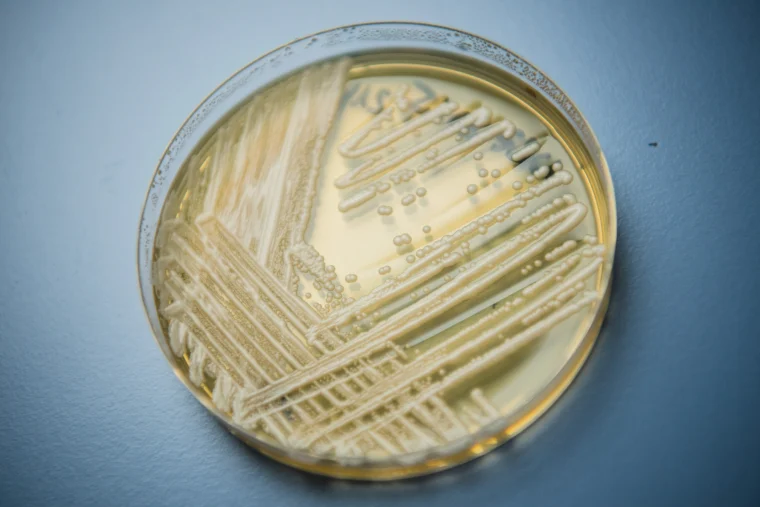Washington state is grappling with a deadly outbreak of Candida auris, a resilient and often drug-resistant fungal infection that poses a serious threat to public health. The emergence of this infection has prompted health authorities to intensify efforts to contain its spread and understand the factors contributing to its virulence.
Candida auris, first identified in 2009, has gained notoriety for its ability to survive on surfaces and persist in healthcare environments. It is known to cause severe infections, particularly in individuals with compromised immune systems. The fungus has exhibited resistance to multiple antifungal medications, making treatment challenging and raising alarms within the medical community.
The outbreak in Washington state has triggered a coordinated response from health officials, who are working to identify the source of the infections and implement measures to curtail its transmission. The affected individuals span a range of age groups and health conditions, indicating the versatility of Candida auris in targeting vulnerable populations.

The resilient nature of Candida auris presents a unique challenge for healthcare facilities, as the fungus can persist on surfaces for an extended period. Rigorous infection control measures, including thorough disinfection and adherence to strict hygiene protocols, are essential to prevent further transmission.
Health authorities are urging healthcare providers to remain vigilant and promptly report any cases of Candida auris to facilitate a swift and effective response. The identification and isolation of infected individuals, along with the implementation of robust infection control measures, are crucial in containing the outbreak.
The Centers for Disease Control and Prevention (CDC) and other public health agencies are closely monitoring the situation in Washington state and collaborating with local authorities to assess the extent of the outbreak. The goal is to implement targeted interventions to prevent further infections and safeguard public health.

As the investigation unfolds, there is a heightened focus on understanding the factors contributing to the outbreak, including potential sources of contamination and patterns of transmission. The multifaceted nature of Candida auris requires a comprehensive approach that combines epidemiological research, genetic analysis of fungal strains, and enhanced surveillance.
In addition to healthcare settings, Candida auris has been detected in various environments, including nursing homes and long-term care facilities. The ability of the fungus to persist in these diverse settings underscores the need for a broad and adaptable strategy to mitigate its impact.
Public awareness is a key component of the response to Candida auris. Health officials are disseminating information to educate the public, healthcare professionals, and institutions about the risks associated with the fungal infection. This includes emphasizing the importance of early detection, proper infection control measures, and reporting suspected cases promptly.
The situation in Washington state serves as a stark reminder of the evolving challenges posed by infectious diseases. Candida auris, with its resistance to treatment and capacity for prolonged survival, underscores the importance of a proactive and collaborative approach to public health.
- Global Concerns: Candida auris is not confined to Washington state; it has emerged as a global health concern. Outbreaks have been reported in various countries, highlighting the transnational nature of infectious diseases. The interconnectedness of our world necessitates international collaboration in research, surveillance, and response strategies to effectively combat the spread of Candida auris.
- Challenges in Diagnosis: One of the challenges associated with Candida auris is its accurate and timely diagnosis. The fungus can be easily misidentified, leading to delayed treatment and increased risk of transmission. Healthcare providers are being encouraged to employ advanced diagnostic methods to promptly and accurately detect Candida auris infections, facilitating swift intervention.
- Antifungal Resistance: Candida auris has exhibited resistance to commonly used antifungal medications, making treatment complicated. The evolution of drug-resistant strains raises concerns about the limited therapeutic options available. Addressing the issue of antifungal resistance requires ongoing research to develop alternative treatment strategies and a deeper understanding of the mechanisms driving resistance.
- Vulnerable Populations: Individuals with weakened immune systems, such as those undergoing chemotherapy, organ transplant recipients, and the elderly, are particularly vulnerable to Candida auris infections. The current outbreak in Washington state emphasizes the need for targeted interventions and heightened vigilance in healthcare settings catering to these high-risk populations.
- Environmental Persistence: The ability of Candida auris to persist in the environment contributes to the challenge of containment. Healthcare facilities are implementing rigorous cleaning protocols to disinfect surfaces and reduce the risk of transmission. Understanding the environmental factors that support the survival of Candida auris is crucial for developing effective preventive measures.
- Research and Development: The outbreak underscores the importance of investing in research and development efforts to combat emerging infectious diseases. The adaptability and resilience of Candida auris highlight the need for innovative solutions, including the development of new antifungal medications, enhanced diagnostics, and preventive strategies.
- Public Health Preparedness: The outbreak serves as a reminder of the importance of public health preparedness. Strengthening surveillance systems, maintaining adequate resources for outbreak response, and ensuring effective communication channels between healthcare providers and public health agencies are vital components of a robust public health infrastructure.
- Community Engagement: Engaging the community in the response to Candida auris is crucial for success. Public awareness campaigns, community forums, and educational initiatives can empower individuals to take proactive measures, understand the importance of hygiene, and recognize the signs of infection, contributing to the overall efforts to curb the outbreak.
- Adaptive Strategies: Given the dynamic nature of infectious diseases, the response to Candida auris requires adaptive and flexible strategies. Continuous evaluation of interventions, incorporating lessons learned from each outbreak, and adjusting protocols based on emerging evidence are essential components of an effective response to this evolving health challenge.

